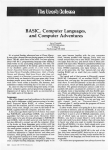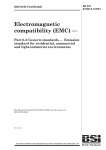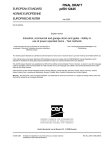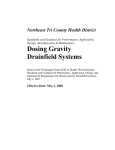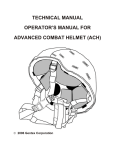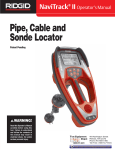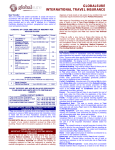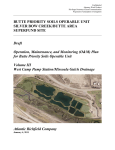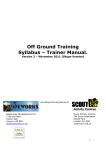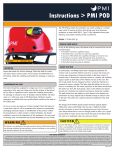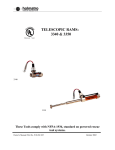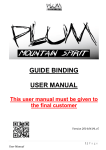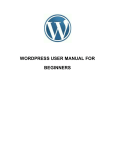Download FINAL DRAFT prEN 15567-1
Transcript
EUROPEAN STANDARD NORME EUROPÉENNE FINAL DRAFT prEN 15567-1 EUROPÄISCHE NORM August 2007 ICS 97.220.10 English Version Sports and recreational facilities - Ropes courses - Part 1: Construction and safety requirements Structures de sport et d'activités de plein air - Parcours acrobatiques en hauteur - Partie 1: Exigences de construction et de sécurité Sport- und Freizeitanlagen - Seilgärten - Teil 1: Konstruktion und sicherheitstechnische Anforderungen This draft European Standard is submitted to CEN members for formal vote. It has been drawn up by the Technical Committee CEN/TC 136. If this draft becomes a European Standard, CEN members are bound to comply with the CEN/CENELEC Internal Regulations which stipulate the conditions for giving this European Standard the status of a national standard without any alteration. This draft European Standard was established by CEN in three official versions (English, French, German). A version in any other language made by translation under the responsibility of a CEN member into its own language and notified to the CEN Management Centre has the same status as the official versions. CEN members are the national standards bodies of Austria, Belgium, Bulgaria, Cyprus, Czech Republic, Denmark, Estonia, Finland, France, Germany, Greece, Hungary, Iceland, Ireland, Italy, Latvia, Lithuania, Luxembourg, Malta, Netherlands, Norway, Poland, Portugal, Romania, Slovakia, Slovenia, Spain, Sweden, Switzerland and United Kingdom. Warning : This document is not a European Standard. It is distributed for review and comments. It is subject to change without notice and shall not be referred to as a European Standard. EUROPEAN COMMITTEE FOR STANDARDIZATION COMITÉ EUROPÉEN DE NORMALISATION EUROPÄISCHES KOMITEE FÜR NORMUNG Management Centre: rue de Stassart, 36 © 2007 CEN All rights of exploitation in any form and by any means reserved worldwide for CEN national Members. B-1050 Brussels Ref. No. prEN 15567-1:2007: E prEN 15567-1:2007 (E) Contents Page Foreword..............................................................................................................................................................3 Introduction .........................................................................................................................................................4 1 Scope ......................................................................................................................................................5 2 Normative references ............................................................................................................................5 3 Terms and definitions ...........................................................................................................................6 4 4.1 4.2 4.2.1 4.2.2 4.2.3 4.2.4 4.2.5 4.2.6 4.3 4.3.1 4.3.2 4.3.3 4.3.4 4.3.5 4.4 Safety requirements ............................................................................................................................10 Choice of site .......................................................................................................................................10 Material .................................................................................................................................................10 General..................................................................................................................................................10 Timber and associated products .......................................................................................................11 Metals....................................................................................................................................................11 Wire ropes ............................................................................................................................................12 Synthetics and composites ................................................................................................................13 Dangerous substances .......................................................................................................................13 Design and manufacture .....................................................................................................................14 General safety requirements ..............................................................................................................14 Loads on safety and activity system .................................................................................................14 Support system....................................................................................................................................15 Activity system.....................................................................................................................................17 Safety system.......................................................................................................................................18 Personal protective equipment ..........................................................................................................20 5 Test methods........................................................................................................................................20 6 6.1 6.2 6.3 6.3.1 6.3.2 Marking .................................................................................................................................................20 General..................................................................................................................................................20 Element identification .........................................................................................................................20 Element marking ..................................................................................................................................20 Notices ..................................................................................................................................................20 Ropes course difficulty .......................................................................................................................21 7 Inspection and maintenance ..............................................................................................................21 8 8.1 8.2 8.3 Documents to be provided .................................................................................................................23 User manual for operators..................................................................................................................23 Tree assessment report ......................................................................................................................24 Inauguration inspection report...........................................................................................................24 Annex A (normative) Minimum information to be included in an arboreal assessment report................25 A.1 General site description ......................................................................................................................25 A.2 Arboreal assessment of each tree .....................................................................................................25 A.2.1 General characteristics .......................................................................................................................25 A.2.2 General tree observations ..................................................................................................................25 A.2.3 Comments, final classification of the tree according to its condition ...........................................25 Annex B (informative) Obtaining tree strength data......................................................................................26 Annex C (normative) Rules for the use of the ropes course ........................................................................27 Bibliography ......................................................................................................................................................28 2 prEN 15567-1:2007 (E) Foreword This document (prEN 15567-1:2007) has been prepared by Technical Committee CEN/TC 136 “Sports, playground and other recreational equipment”, the secretariat of which is held by DIN. This document is currently submitted to the Formal Vote. This standard is divided into the following two parts: Part 1: Construction and safety requirements. Part 2: Operation requirements. 3 prEN 15567-1:2007 (E) Introduction Ropes courses vary considerably and may be used for education, recreational, training or therapeutic purposes. Ropes course activities involve risks that should be managed by the operators. This is achieved through careful supervision, training, instruction, information etc. Ropes course activities should only be taken by those who are physically and mentally able to comply with the safety requirements specified by the operator. The various safety devices (for protection against falling from a height and collisions) consist of equipment designed to limit the consequences of falls or collisions. There are inherent risks associated with ropes courses. These risks should, however, be appropriately managed and minimised by the ropes course operator and his staff; it should be understood that they can not be eliminated altogether. On the basis of a risk assessment, operators should take reasonably practicable measures to ensure the safety of participants. This means that the degree of risks in a particular job/work place/facility need to be balanced against the time, trouble, cost, benefits and physical difficulty of taking measures to avoid or reduce the risk. Ropes course operators should also consider prEN 15567-2, when carrying out risk assessments. 4 prEN 15567-1:2007 (E) 1 Scope This European Standard applies to permanent and mobile ropes courses and their components. This Part 1 of this standard specifies safety requirements for the design, construction, inspection and maintenance of ropes courses and their components. This Part 1 of this standard does not apply to temporary ropes courses (see 3.3) and children's play grounds (see EN 1176 all parts). For the use of ropes courses part 2 applies. 2 Normative references The following referenced documents are indispensable for the application of this document. For dated references, only the edition cited applies. For undated references, the latest edition of the referenced document (including any amendments) applies. EN 335-2, Durability of wood and wood-based products — Definition of use classes — Part 2: Application to solid wood EN 350-2:1994, Durability of wood and wood based products — Natural durability of solid wood — Part 2: Guide to the natural durability and treatability of selected wood species of importance in Europe EN 351-1:1995, Durability of wood and wood-based products — Preservative-treated solid wood — Part 1: Classification of preservative penetration and retention EN 636, Plywood – Specifications EN 13411-1, Terminations for steel wire ropes — Safety — Part 1: Thimbles for steel wire rope slings EN 13411-2, Terminations for steel wire ropes — Safety — Part 2: Splicing of eyes for wire rope slings EN 13411-3, Terminations for steel wire ropes — Safety — Part 3: Ferrules and ferrule-securing EN 13411-4, Terminations for steel wire ropes — Safety — Part 4: Metal and resin socketing EN 13411-5, Terminations for steel wire ropes — Safety — Part 5: U-bolt wire rope grips EN 13411-6, Terminations for steel wire ropes — Safety — Part 6: Asymmetric wedge socket EN 13411-7, Terminations for steel wire ropes - Safety - Part 7: Symmetric wedge socket prEN 15567-2, Sports and recreational facilities-Ropes courses - Part 2: Operation requirements EN ISO/IEC 17020:2004, General criteria for the operation of various types of bodies performing inspection (ISO/IEC 17020:1998) ISO 4309:2004, Cranes - Wire ropes - Care, maintenance, installation, examination and discard 5 EUROPEAN STANDARD NORME EUROPÉENNE FINAL DRAFT prEN 15567-2 EUROPÄISCHE NORM August 2007 ICS 97.220.10 English Version Sports- and recreational facilities - Ropes courses - Part 2: Operation requirements Structures de sport et d'activités de plein air - Parcours acrobatiques en hauteur - Partie 2: Exigences d'exploitation Sport- und Freizeitanlagen - Seilgärten - Teil 2: Anforderungen an den Betrieb This draft European Standard is submitted to CEN members for formal vote. It has been drawn up by the Technical Committee CEN/TC 136. If this draft becomes a European Standard, CEN members are bound to comply with the CEN/CENELEC Internal Regulations which stipulate the conditions for giving this European Standard the status of a national standard without any alteration. This draft European Standard was established by CEN in three official versions (English, French, German). A version in any other language made by translation under the responsibility of a CEN member into its own language and notified to the CEN Management Centre has the same status as the official versions. CEN members are the national standards bodies of Austria, Belgium, Bulgaria, Cyprus, Czech Republic, Denmark, Estonia, Finland, France, Germany, Greece, Hungary, Iceland, Ireland, Italy, Latvia, Lithuania, Luxembourg, Malta, Netherlands, Norway, Poland, Portugal, Romania, Slovakia, Slovenia, Spain, Sweden, Switzerland and United Kingdom. Warning : This document is not a European Standard. It is distributed for review and comments. It is subject to change without notice and shall not be referred to as a European Standard. EUROPEAN COMMITTEE FOR STANDARDIZATION COMITÉ EUROPÉEN DE NORMALISATION EUROPÄISCHES KOMITEE FÜR NORMUNG Management Centre: rue de Stassart, 36 © 2007 CEN All rights of exploitation in any form and by any means reserved worldwide for CEN national Members. B-1050 Brussels Ref. No. prEN 15567-2:2007: E prEN 15567-2:2007 (E) Contents Page Foreword..............................................................................................................................................................3 Introduction .........................................................................................................................................................4 1 Scope ......................................................................................................................................................5 2 Normative references ............................................................................................................................5 3 Terms and definitions ...........................................................................................................................5 4 4.1 4.2 Documents relating to site operation ..................................................................................................6 Administrative documentation .............................................................................................................6 Operation documentation .....................................................................................................................6 5 Information to be provided to participants and visitors ....................................................................7 6 6.1 6.2 6.3 6.4 Safety instructions and practical assessment of participants .........................................................7 General....................................................................................................................................................7 Safety instruction...................................................................................................................................7 Practical assessment for self belay ropes courses ...........................................................................8 Practical assessment for assisted belay ropes courses and spotting ............................................8 7 7.1 7.2 7.3 Equipment ..............................................................................................................................................8 General....................................................................................................................................................8 Participants' equipment ........................................................................................................................8 Equipment inspection ...........................................................................................................................8 8 Pedestrian trails .....................................................................................................................................8 9 9.1 9.2 9.3 9.4 9.5 9.6 Ropes course instruction and supervision.........................................................................................8 General....................................................................................................................................................8 Self belay ................................................................................................................................................9 Self belay for children ...........................................................................................................................9 Assisted belay/ team belaying..............................................................................................................9 Continuous belay system .....................................................................................................................9 Spotting ..................................................................................................................................................9 10 Inspection and maintenance ................................................................................................................9 11 Security and emergency plan.............................................................................................................10 Annex A (informative) Daily operation sheet..................................................................................................11 Annex B (normative) Control and inspection of personal protective equipment ......................................12 B.1 Checking frequency ............................................................................................................................12 B.1.1 Routine check ......................................................................................................................................12 B.1.2 Complete check ...................................................................................................................................12 B.2 Maintenance and storage....................................................................................................................12 B.3 Log ........................................................................................................................................................12 B.3.1 General..................................................................................................................................................12 B.3.2 Service life record................................................................................................................................12 B.3.3 Equipment identification .....................................................................................................................13 B.4 Competence of the inspectors ...........................................................................................................13 B.5 Information to be provided to participants .......................................................................................13 B.5.1 Supervised activities ...........................................................................................................................13 B.5.2 Unsupervised activities.......................................................................................................................13 2 prEN 15567-2:2007 (E) Foreword This document (prEN 15567-2:2007) has been prepared by Technical Committee CEN/TC 136 “Sports, playground and other recreational equipment”, the secretariat of which is held by DIN. This document is currently submitted to the Formal Vote. This standard is divided into the following two parts: Part 1: Construction and safety requirements. Part 2: Operation requirements. 3 prEN 15567-2:2007 (E) Introduction Ropes courses vary considerably and may be used for education, recreational, training or therapeutic purposes. Ropes course activities involve risks that should be managed by the operators. This is achieved through careful supervision, training, instruction, information etc. Ropes course activities should only be taken by those who are physically and mentally able to comply with the safety requirements specified by the operator. The various safety devices consist of equipment designed to limit the consequences of falls or collisions. There are inherent risks associated with ropes courses. These risks should however be appropriately managed and minimised by the ropes course operator and their staff; it should be understood that they can not be eliminated altogether. On the basis of a risk assessment, operators should take reasonably practicable measures to ensure the safety of participants. This means that the degree of risks in a particular job/work place/facility needs to be balanced against the time, trouble, cost, benefits and physical difficulty of taking measures to avoid or reduce the risk. Ropes course operators should also consider prEN 15567-1, when carrying out risk assessments. 4 prEN 15567-2:2007 (E) 1 Scope This European Standard applies to the operation of ropes courses, see definition in 3.1 of prEN 15567-1:2006. This Part 2 of these standards specifies operational requirements to ensure an appropriate level of safety and service when used for either recreation, training, education or therapeutic purposes. 2 Normative references The following referenced documents are indispensable for the application of this document. For dated references, only the edition cited applies. For undated references, the latest edition of the referenced document (including any amendments) applies. prEN 15567-1:2006, Sports and recreational facilities — Ropes courses — Part 1:Construction and safety requirements EN ISO/IEC 17020, General criteria for the operation of various types of bodies (ISO/IEC 17020:1998) 3 performing inspection Terms and definitions For the purposes of this document, the terms and definitions given in EN 15567-1:2006 and the following apply. 3.1 instructor person who has been trained to undertake the following duties: provide the information required to ensure that the equipment and elements are used correctly; check that participants use the right equipment; assess a person's self-sufficiency on a rope test course; ensure that the safety instructions are complied with; alert a rescuer if required; provide assistance to participants 3.2 operator individual or organisation responsible for the operation of a ropes course 3.3 rescuer instructor with the additional task of providing assistance and/or bringing participants back to the ground 3.4 accident event that results in an injury or was caused by a failure of a critical application 5 prEN 15567-2:2007 (E) 3.5 level 1 supervision situation whereby an instructor can physically intervene 3.6 level 2 supervision situation whereby an instructor can clearly see the participant and intervene verbally 3.7 level 3 supervision situation whereby an instructor is in a position to communicate verbally with and to provide adequate assistance to participants 4 Documents relating to site operation 4.1 Administrative documentation The administrative documentation shall include: name and address of the owner and operator any relevant permit and registration; document indicating the annual inspections carried out by an inspection body; list of the site personnel and their job titles; evidence of public and other liability insurance. 4.2 Operation documentation The site operation documentation shall include: logbook containing the daily operation sheets (including the faults observed during inspections at opening and closing times, relevant events concerning safety ) (see the sample sheet in informative Annex A). The daily sheets should be kept for three years; accident report sheets; personal protective equipment inspection register and operation log; risk assessment and management plan shall be drawn up by the ropes course operator. In case of deviations from the general requirements for supervision, a risk assessment and management document shall be supplied. Instructor and rescue training to be documented; manufacturer's product manual (see 15567-1:2006, clause 9); rescue and emergency plan (see clause 11); current tree assessment report; current inspection report. 6 prEN 15567-2:2007 (E) 5 Information to be provided to participants and visitors The following information shall be provided to participants: description of the activity and safety instructions; limits and restrictions for use; information relating to personal public liability insurance of the operator; information about how to identify the course instructors. The following information shall be provided to participants: limits of access 6 Safety instructions and practical assessment of participants 6.1 General The operator shall ensure that the instructions for the use of the ropes course (according to prEN 155671:2006, Annex C) are observed. 6.2 Safety instruction Before commencing an activity, participants shall be informed of the safety instructions. This information should include at least: a) Explanation of the ropes course and inherent risks, b) Explanation of the equipment to use (PPE) when required, c) Demonstration by the instructor or manipulation of the equipment (when required) by the participant, d) Explanation of the safety instructions, especially the need to be always connected to the safety system by at least one connector (when required), e) Explanation of any marking placed at the start of every course, f) Explanation of any marking placed at the beginning of every action system, g) Identification of instructors and how and when to communicate with them; h) At any time any participant shall be within range of sight of either an instructor or an adult participant (when required); i) Action to be taken in event of an accident. When demonstrating, the instructor shall use the same equipment (PPE) as used by the participants. All of this information shall be documented. 7 prEN 15567-2:2007 (E) 6.3 Practical assessment for self belay ropes courses The principles of the various techniques participants will have to perform during the courses shall be explained. The participants’ understanding of these techniques shall be assessed on a test ropes course. The assessment shall include all the safety systems used on the ropes course. All of the participants shall pass the test course before progressing. 6.4 Practical assessment for assisted belay ropes courses and spotting The principles of the various techniques they will have to perform during the courses shall be explained. The participants’ understanding of these techniques shall be assessed. The assessment shall include all the safety systems used on the ropes course. 7 Equipment 7.1 General When equipment is provided to participants, the manufacturer's instructions and the requirements specified in this document shall be observed. A complete check shall be carried out at least once a year or after an exceptional event has occurred. 7.2 Participants' equipment The fitting of the personal protective equipment shall be checked by an instructor prior to use. The personal protective equipment shall be appropriate to the morphology of the participants. A full body harness shall be worn where appropriate, e.g. when a sit harness is ill fitting around the waist. If a participant has need to adjust any PPE it shall be checked by an instructor before resuming activities. 7.3 Equipment inspection The personal protective equipment shall be inspected in accordance with Annex B and the manufacturer's information. 8 Pedestrian trails Signs and markers shall be used to guide pedestrians along the ground trails and away from areas where they risk being struck by objects falling from platforms, or colliding with participants (for example Tyrolean traverse arrival points, fireman's poles, swinging jumps, and so on). 9 Ropes course instruction and supervision 9.1 General During a rescue operation, a rescuer shall be dispatched without any adverse effect on site supervision. The communication between participants and an instructor shall be ensured. At any time any participant shall be within range of sight of either an instructor or an adult participant. 8 prEN 15567-2:2007 (E) 9.2 Self belay There shall be an adequate number of instructors to ensure the following: The first five elements negotiated by a participant shall be under level 2 supervision. During this period instructors shall pay particular attention to the change-overs. After this period participants shall be under level 3 supervision by instructors. In the case of safety systems not included in the safety instructions or the aptitude assessment, the elements shall be under level 2 supervision by at least one course instructor. 9.3 Self belay for children Children under the age of 6 shall be under level 1 supervision by an instructor on the whole ropes course. Children between the age of 6 and 8 shall be under level 2 supervision by an instructor on the whole ropes course. 9.4 Assisted belay/ team belaying There shall be a minimum of one instructor for 4 participants (at height). In such instances the belayers shall be under level 1 supervision of the instructor. 9.5 Continuous belay system There shall be a minimum of one instructor to ensure that participants are correctly attached to the safety system. 9.6 Spotting Spotting shall be undertaken with level 2 supervision. 10 Inspection and maintenance The instructions shall specify the frequency with which the equipment or its components should be inspected or maintained and shall include guidance on the following, where relevant: a) routine visual check; A routine visual check shall be carried out before each opening. NOTE 1 Examples of visual and operational inspection points are cleanliness, equipment ground clearances, ground surface finishes, exposed foundations, sharp edges, missing parts, excessive wear (of moving parts) and the structural integrity of the safety system. b) operational inspection; This should be carried out every 1 month to 3 months, or as indicated by the manufacturer's instruction. c) periodical inspection. The following shall be carried out: Visual inspection, Functional inspection, 9 prEN 15567-2:2007 (E) Determination of replacement state of worn parts, inspection including all manufacturer’s/supplier’s instructions for maintenance. Periodical inspections shall be carried out at least once every year by an inspection body (type A, type B or type C in accordance with EN ISO/IEC 17020). Any safety relevant defects observed shall be eliminated. Specific considerations on safety critical wire ropes shall be given to the potential effects of fatigue. Periodical inspection of permanent ropes courses installed on trees shall be carried out at least once every year by an inspection body with experience and knowledge on ropes courses and trees and woods. For periodical inspections an inspection report shall be drawn up including the following: date and place of the inspection; results of the inspection indicating the defects observed; assessment, whether there are any misgivings about further use of the facility; information on necessary re-inspection; name, address and signature of the examiner. The inspection report shall be included in the technical documentation of the ropes course. NOTE 2 Typical checks include the effects of weather, evidence of rotting or corrosion and any change in the level of safety of the equipment as a result of repairs made, or of added or replaced components. NOTE 3 The periodical inspection may require excavation or dismantling certain parts. 11 Security and emergency plan The security and emergency plan shall be appropriate to the surface area of the ropes course and the number of participants it can accommodate. It shall contain at least the following information: names of the rescuers and the name and address of the operator; means of communication; emergency equipment; drawings indicating the emergency paths, accesses and exits; procedures for evacuating: 10 1) person injured on a ropes course; 2) all the people in the ropes course (in the event of a storm, high wind, flood, etc). prEN 15567-2:2007 (E) Annex A (informative) Daily operation sheet DAILY OPERATION SHEET Date: Daily weather forecast Opening time: Closing time: sunny moderate rainy stormy windy other Site 5 Site 6 Site 7 Day manager: Operating personnel (names and signatures) DAILY FACILITIES CHECK Site 1 Site 2 Site 3 Site 4 Paths Fall prevention devices Platforms Bridges Rope swing Zip wire Zip wire landing areas Support trees Any change or modification shall be mentioned: good condition: G / to be monitored: TBM / comment: C (explain overleaf) / out of service: OOS / modify: M (specify overleaf) Number of participants to the children’s course Number of participants to the adult's course SPECIAL EVENTS: accident (attach report), unusual weather conditions, etc. 11 prEN 15567-2:2007 (E) Annex B (normative) Control and inspection of personal protective equipment B.1 Checking frequency B.1.1 Routine check A routine check shall be carried out before equipment is made available and after it has been returned. B.1.2 Complete check A complete check consists of a routine check and an additional check. A complete check shall be performed by an inspector: at least every 12 months. According to the amount of use to which the PPE device is subjected, the checks can be performed more frequently, as required by the person responsible for hiring the equipment or its owner; after an exceptional event; after the equipment has been withdrawn from use following a routine check. If the defective equipment that has been withdrawn from use cannot be repaired, it shall be scrapped. B.2 Maintenance and storage Equipment shall be maintained and stored in accordance with the manufacturer's instructions. B.3 Log B.3.1 General The log consists of all the personal protective equipment inspection registers of the equipment provided and the corresponding manufacturer’s instructions. B.3.2 Service life record The effective lifetime of the equipment is the time indicated by the manufacturer. A personal protective equipment inspection register is required for each device or each set of devices. All exceptional events affecting the equipment, the checks performed as a result of such events and the minimum annual checks shall be entered on the personal protective equipment inspection register. In the event of a change of owner/operator, the personal protective equipment inspection register shall accompany the equipment. This personal protective equipment inspection register shall be appended to the new one created by the new owner/operator. 12 prEN 15567-2:2007 (E) If the equipment is divided into two (for example a rope), two new personal protective equipment inspection registers shall be created. The initial personal protective equipment inspection register shall be appended to each of the new ones created. B.3.3 Equipment identification Each individual device made available shall be marked for identification purposes. Sets of equipment can also be marked if they can be identified as being unique by their reference numbers, identification marks, first used date and, if applicable, date of manufacture. B.4 Competence of the inspectors An inspector is a person designated by the owner / operator of the equipment to perform routine, additional and complete checks on the equipment, according to the requirements specified in this document. Inspectors shall: be familiar with this document; know how to perform the checks described in this document; be familiar with the use and operation of the equipment they are responsible for checking; be able to operate the monitoring tool. The following persons are deemed to be competent if: a) they hold a state climbing certificate (mountaineering, climbing, potholing); or b) they have completed a special course run by an organisation that can certify that the person in question has specific skills in the equipment mentioned in this document; or c) they can prove that they have at least 24 months experience as an inspector. B.5 Information to be provided to participants B.5.1 Supervised activities The supervisor shall provide participants with information regarding suitable equipment for their level of experience. B.5.2 Unsupervised activities Participants shall be shown how to use the equipment correctly. Instructions for use shall be provided at the equipment hire centre. Participants shall be shown how to adjust the equipment. The following rules shall be observed: crampons shall be used with the appropriate shoes. They shall be tried on; participants shall be specifically shown how to use the harnesses, which shall be tried on; helmets shall be adjusted to fit the wearer's head. 13 prEN 15567-2:2007 (E) When they return the equipment, participants shall be asked to indicate any serious fall or (other) exceptional event that occurred. NOTE 14 This procedure can be formalised by asking participants to sign a document.



















